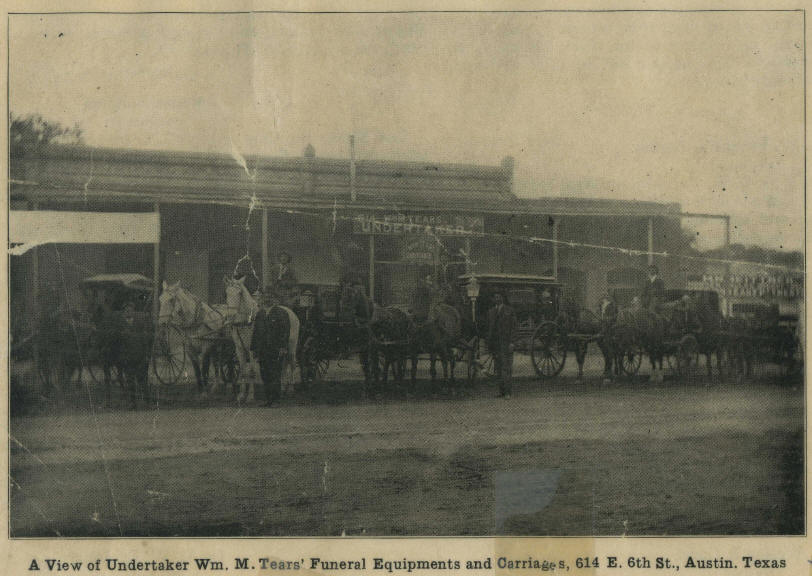
Tears Funeral Home
| William M. Tears, Sr., founded the Tears Funeral home on East 6th St. either in 1900,[1] or in 1901.[2] It is believed to be the first Black-owned funeral business in the state of Texas.[3] He was active in the African American community as an undertaker before opening his own funeral home. |
|
|
 |
This is a photograph of the original Tears location on East Sixth Street. |
| From the collection of Marjon Christopher, King-Tears. | ||
|
|
| “Mr. William M. Tears, Sr., had been the person to bury Black Americans for the Thurlow B. Weed Funeral Home, a White business. When he opened Tears Funeral Parlor on East 6th Street, N.W. Rhambo, his brother-in-law (they were married to sisters), was his embalmer.”[4] Mr. Rhambo went on to found his own mortuary in 1911. |
|
While working for the Weed Funeral Home, William Tears had responded to the shortage of cemetery space for the Black community by organizing a consortium of African American leaders to purchase private land in East Austin for a new cemetery and burial association. In 1893 the Bethany Cemetery was opened under Tears’ supervision.[5] |
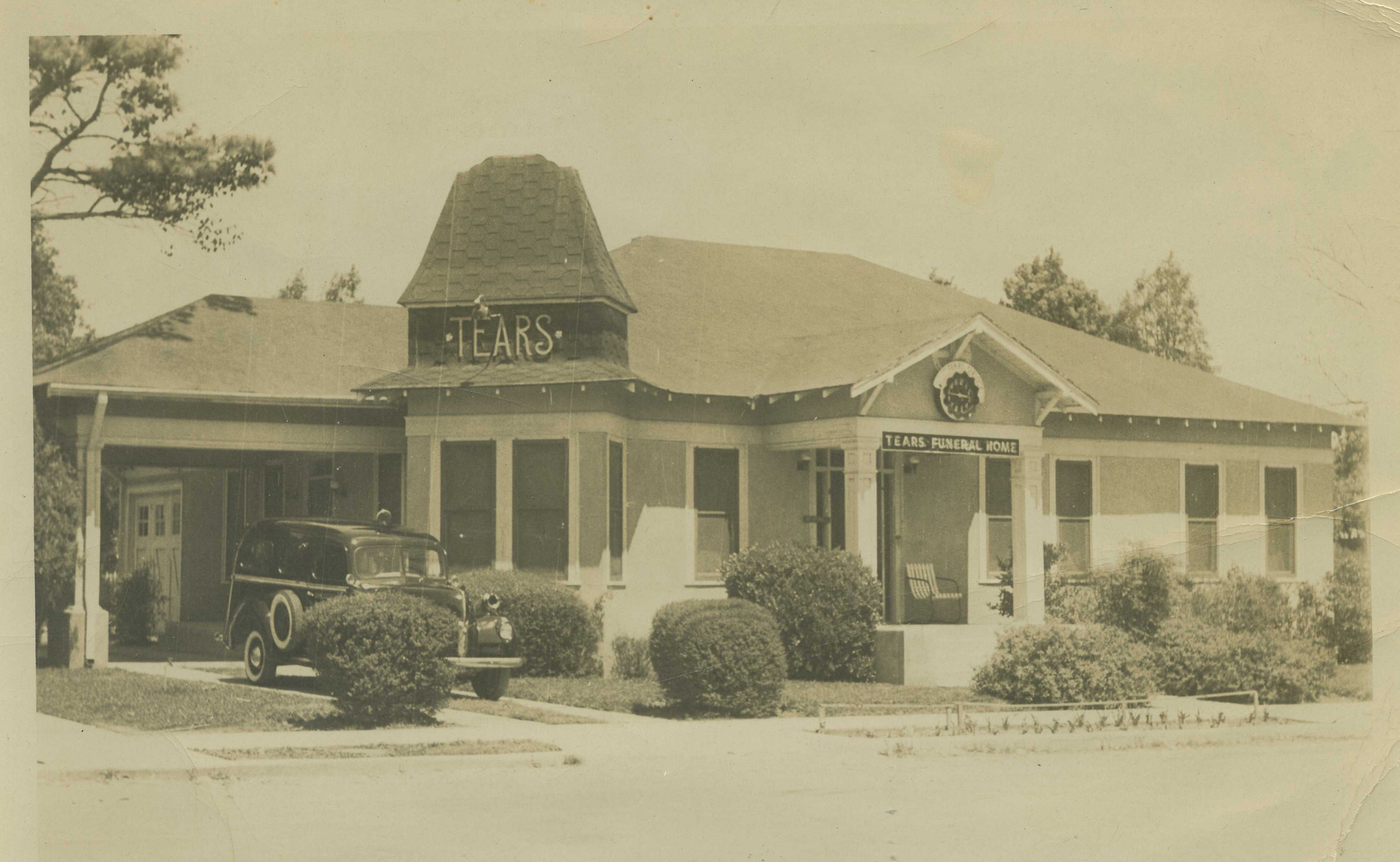 |
This is a photograph of the second Tears home, on 12th St., circa 1940. This is the current location of the King-Tears Funeral Home. |
| From the collection of Marjon Christopher, King-Tears | |
|
When Mr. Tears died in 1923, William Tears, Jr., took over. The son moved the funeral home to its current 12th Street address in 1934. After the death of William Tears, Jr., in 1941, the founder’s other son, Milton C. Tears assumed ownership until his retirement in 1955. The Tears Funeral Home was sold to the King family in 1955, becoming King-Tears. The Tears facility was enlarged at the time of the merger, and King-Tears continues to operate from this 12th Street location.[6]
|
| Timeline |
1893 William M. Tears, Sr., works with others to found the Bethany Cemetery after Oakwood Cemetery’s “colored section” reached capacity.
1900 or 1901 Tears, Sr., opens his funeral home at 614 East Sixth Street.
1923 Tears, Sr., dies and William Tears, Jr., assumes responsibility for the funeral home.
1932 King Funeral Home founded at 1107 East Sixth Street in a two-story frame house by C.B. King.[7]
1934 Tears moves to current 12th Street address.
1936 King expands the Sixth Street home and adds a stucco façade.[8]
1941 William Tears, Jr., dies, and his brother, Milton C. Tears takes over the Tears Funeral Home.
1941 C.B. King dies. His wife and son, Alice and John Q.T. King, continue the family funeral home.
1955 Milton Tears retires and the home merges to become King-Tears Funeral Home at the 12th Street address. The original Tears frame structure is replaced with a modern masonry building.
1971 King-Tears is remodeled again at the current 12th St. address.
1984 Alice T. King Johnson dies, age 93.[9]
|
King Funeral Home
|
The King family was from Memphis, Tennessee. Charles B. King, who had been an insurance executive, originally came to Austin to purchase the funeral home of the late N.W. Rhambo in 1932. But during King’s move to Texas, Rhambo’s widow sold the business to the Fullers, and it became the Fuller Funeral Home on Angelina Street.
The following is from a history of King-Tears written by Dr. King, probably in the 1990s. The complete document can be found by following this link.
“There were two Black funeral homes in Austin at that time—Tears Funeral Home, organized in 1901 and Rhambo Funeral Home, organized in 1911.”[10]
In spite of Mrs. Rhambo’s reversal—or perhaps because of it—Mr. King decided to complete his family’s move to Austin and open his own funeral home. He also established a burial association. The new funeral home was opened at 1107 East Sixth Street in a two-story frame house in 1932.[11] |
|
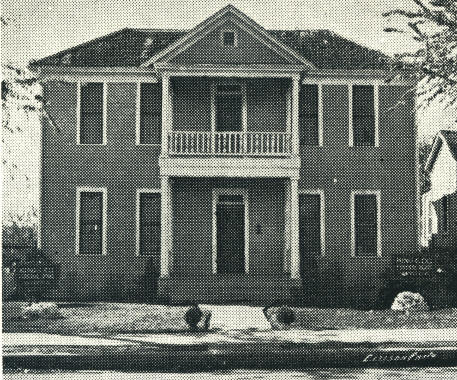 |
First King Funeral Home on Sixth Street, 1933 |
| From the collection of Marjon Christopher, King-Tears | |
|
|
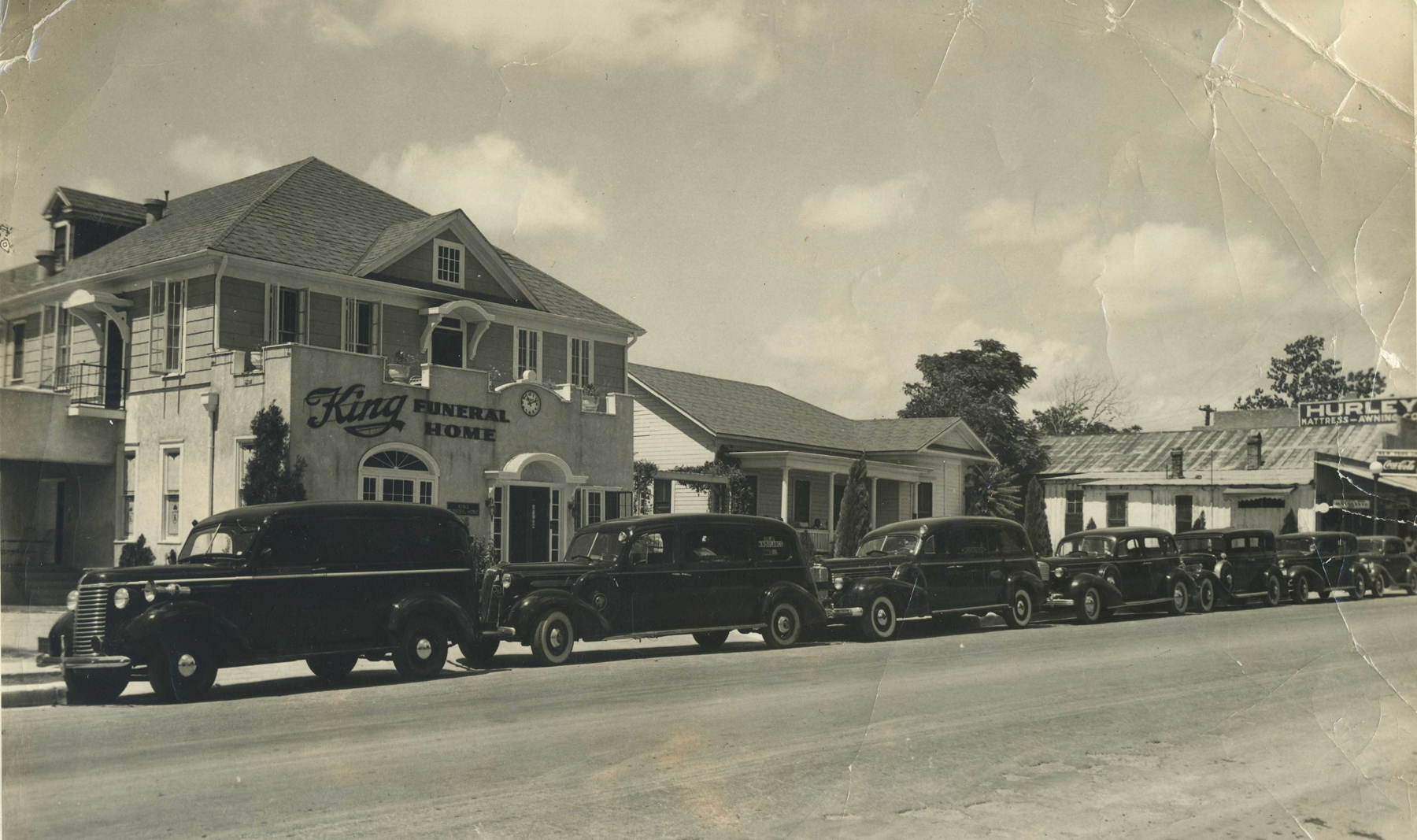 |
| Remodeled King Funeral Home on Sixth Street, 1936 |
| From the collection of Marjon Christopher, King-Tears
|
 |
As the newest African American funeral home in town, Mr. King worked hard to promote his family business.
“In 1934, the burial association, which was named the Unity Benevolent Association, gave quarts of milk to expectant mothers during the winter months. This was during the ‘Great Depression.’ In 1935 the burial association put four very large oscillating fans in the ‘Colored Women’s Ward’ at Brackenridge hospital. In 1936 the burial association gave free ambulance service to any person, anytime of day or night….”[12] |
|
| From the collection of Marjon Christopher, King-Tears | ||
|
|
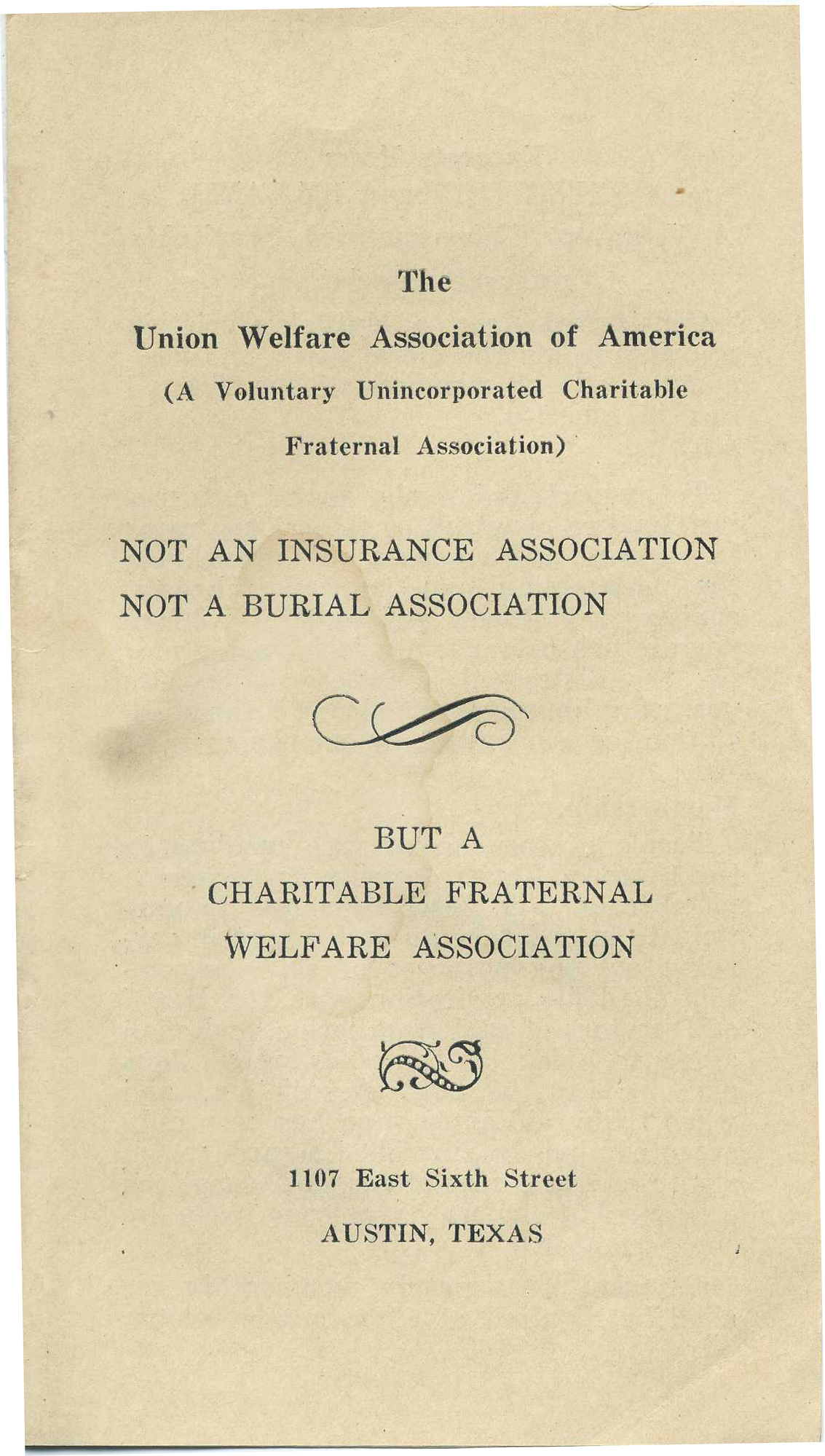 |
Many funeral homes maintained “burial associations” which provided insurance to cover the cost of funeral services. Each of the African American mortuaries in Austin during the 1930s had their own association.
“In 1936, the Texas State Legislature passed a law ‘outlawing’ burial associations, thus attempting to force existing burial associations to sell to insurance companies. Mr. King refused to sell his burial association! He changed the name from Unity Benevolent Association to Union Welfare Association. He issued new cards which alluded to the fact that the Association was a ‘charitable association,’ existing to assist in burying indigent people. Instead of people paying dues each month for a $75, $100, or $150 burial, they made a ‘pledge’ each month to charity. Mr. King was sued each year by the State Attorney General, from 1936-1940, and won each case.”[13] |
|
| From the collection of Marjon Christopher, King-Tears |
|
|
|
The King Funeral Home founder died in 1941, and his widow continued to operate the family business with her son, John Q. Taylor King. He had just graduated from Fisk University and then mortuary college. He married the following year; however, he was drafted to fight in the European War in 1942. His mother operated the funeral home in Austin with the help of many valuable assistants during the war.
After the war, Major General John Q.T. King returned to the family business. He earned a Ph.D. at the University of Texas in 1957. He served as a faculty member at Huston-Tillotson for 41 years, including a tenure as the College’s President. He also served on the boards of his alma mater, Fisk University in Nashville, Austin College in Sherman, Texas, and the Texas Commerce Bank.[14]
There are extensive oral history interviews with Dr. King available at the Austin History Center[15], the African American Texas Oral History Project[16], and at the Humanities Texas website.[17] |
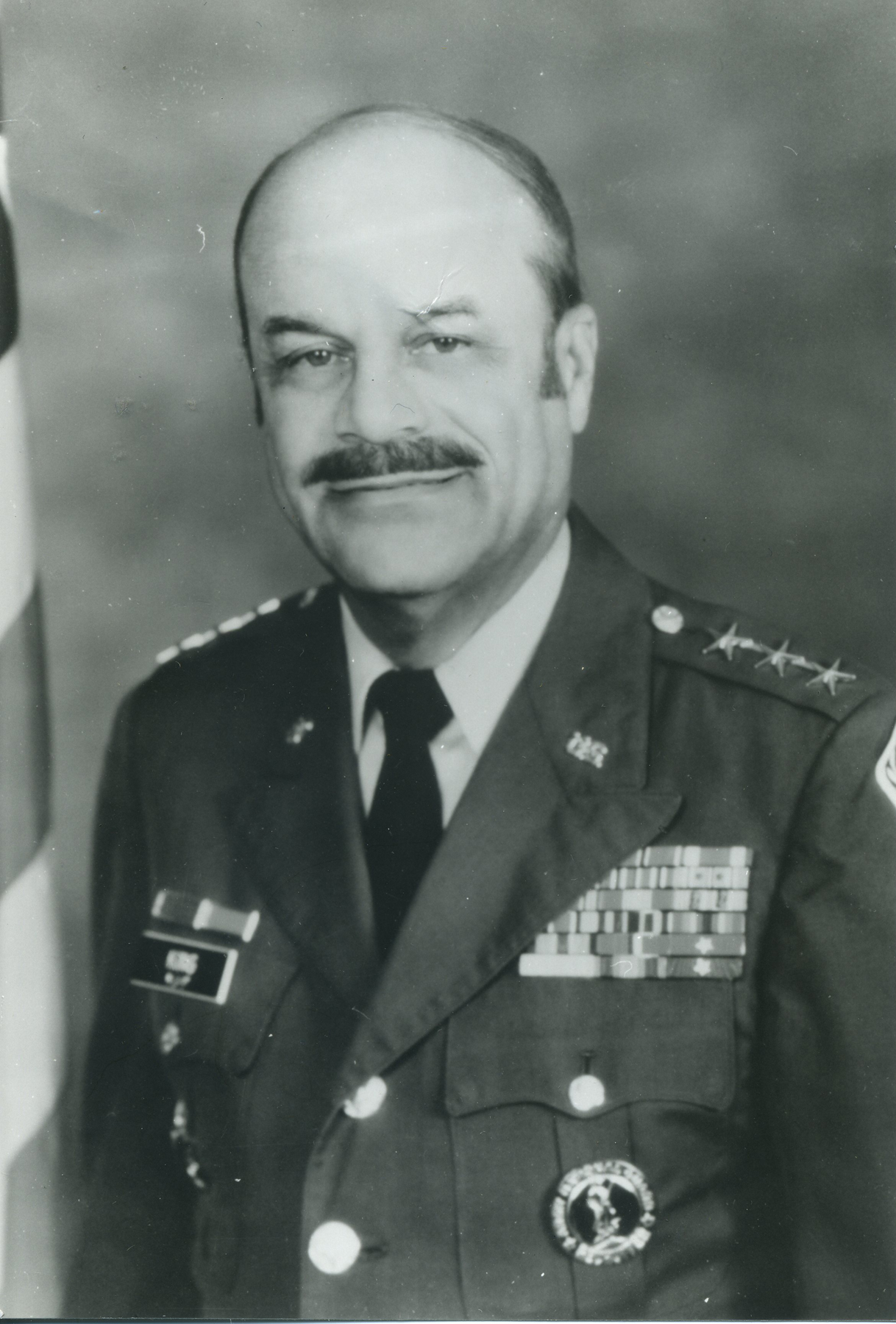 |
|
|
Dr. John Q.Taylor King |
| From the collection of Marjon Christopher, King-Tears |
King-Tears Mortuary, Inc.
|
“In 1955, Milton C. Tears, owner of Tears Funeral Home, contacted John Q. Taylor King and advised him that he desired to retire and sell his business, and asked if there was any interest on the part of the King family to purchase the Tears Funeral Home. The King family had been looking for a new location, as the East 6th Street location was surrounded by industry…. The East 6th Street funeral home was sold, the house next to the Tears Funeral Home was purchased for Mrs. King, and the Tears building was remodeled…. The name was changed to King-Tears Mortuary.”[18]
|
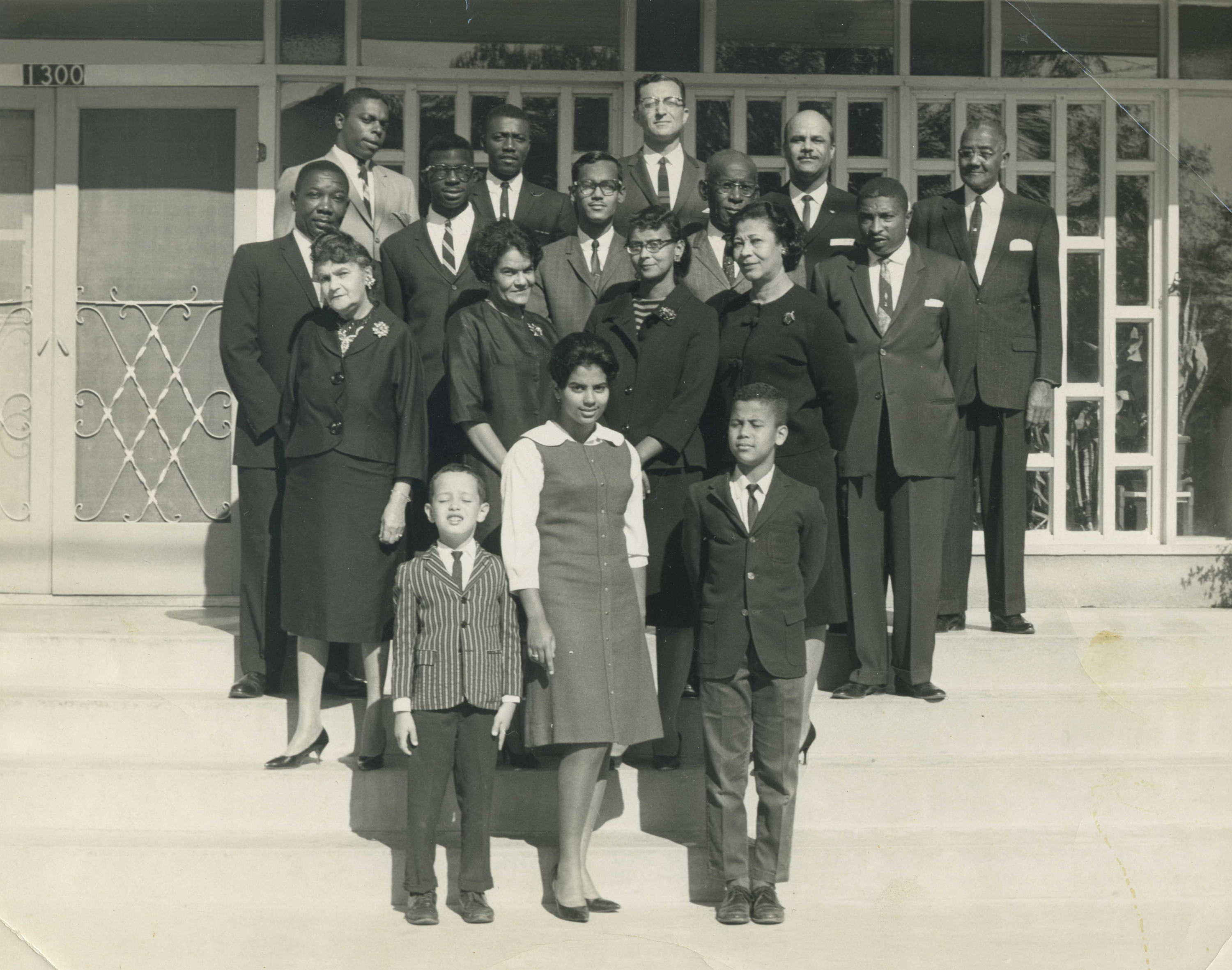 |
Dr. King has retired from the funeral home, but his son and
daughter continue to operate King-Tears. They are Stuart H. King and Marjon
King Christopher. Many of the cited documents and photographs of the
mortuary are from Mrs. Christopher’s collection. This photograph from 1965 shows three generations of the King Funeral Home family. On the front row, Marjon is center, and Stuart is pictured on the right. |
| From the collection of Marjon Christopher, King-Tears |
|
Here is the text from the historic marker placed in front of the mortuary in 2002:
“In October 1901, William M. Tears opened the Tears Funeral Home at 614 E. 6th Street to provide mortuary services for African Americans in Austin and the surrounding area. Upon his death in 1923, his son William M. Tears, Jr. became manager of the firm. In 1933, Mr. and Mrs. Charles B. King opened King and Company (later King Funeral Home) at 1107 E. 6th Street. Tears relocated to this site in 1934, and King completed extensive remodeling in 1936. In 1955, these two historic East Austin establishments merged to form the King-Tears Mortuary. Continuing to operate at this site with expanded services and charitable works in the community, King-Tears remains an important part of Austin's heritage.”[19] |
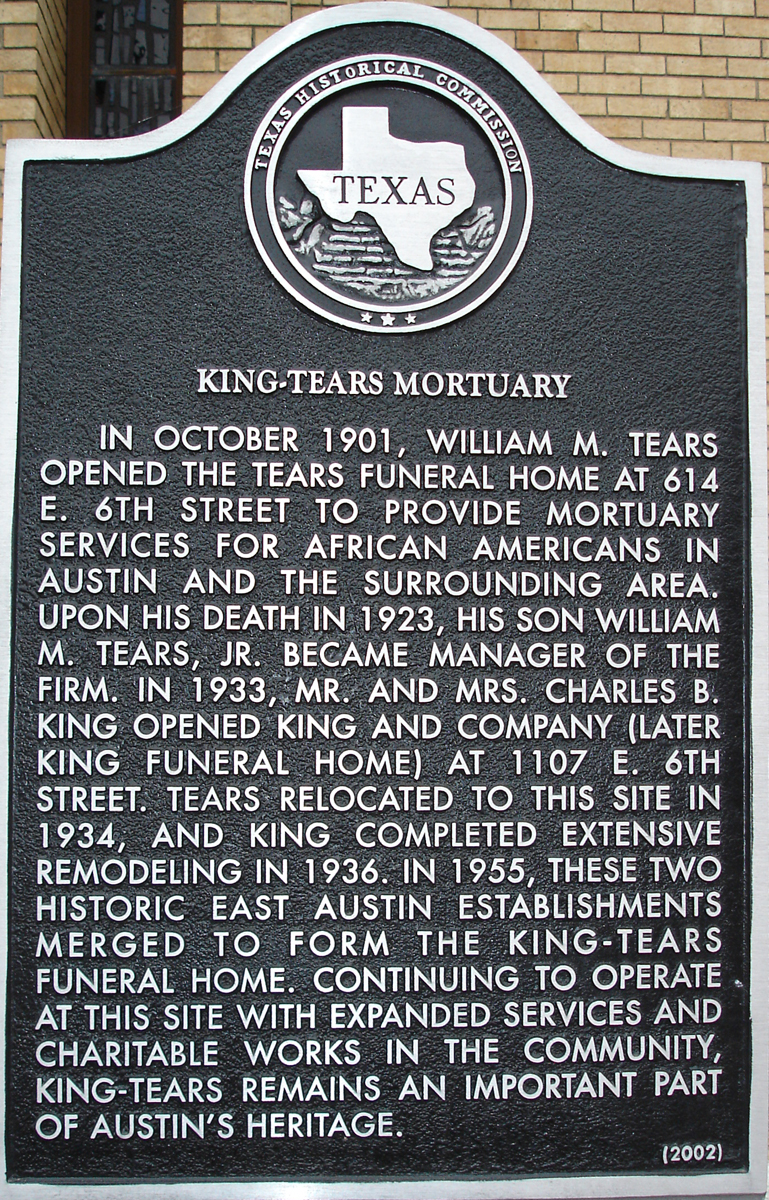 |
||
| Photo by author | |||
 |
This is the modern King-Tears Mortuary, Inc. It remains at the corner of 12th and San Bernard Streets. | ||
| Photo by author |
Home Historical Context Tears History Fuller History Black Cemeteries
[1] “An Era in the Growth of an Austin Business” (1965). Capital City Argus. Austin. January 7, 1965, pp. 6-7. [From the Austin History Center “Undertakers & Undertaking” file].
[2] “The King-Tears Story” (1971). The Tribune. Austin. v.1, #41 (May 13, 1971). [From the Austin History Center “Undertakers & Undertaking” file].
[3] “An Era in the Growth of an Austin Business” (1965). Capital City Argus. Austin. January 7, 1965, pp. 6-7. [From the Austin History Center “Undertakers & Undertaking” file].
[4]King, J.T.Q. (1995+?). The History of King-Tears Mortuary, Inc. [From the personal papers of Marjon Christopher, V.P., King-Tears.]
[5] Simon, Ada. (1983). “Family Burial Site Holds Special Meaning for Blacks.” Austin American-Statesman, November 10, 1983.
[6]“The King-Tears Story” (1971). The Tribune. Austin. v.1, #41 (May 13, 1971). [From the Austin History Center “Undertakers & Undertaking” file].
[7] Fuller, M.A.B. (1948). Historical booklet of religious, business, professional men and women. [Austin: S.n.] [From the Austin History Center “Undertakers & Undertaking” file].
[8] “The King-Tears Story” (1971). The Tribune. Austin. v.1, #41 (May 13, 1971). [From the Austin History Center “Undertakers & Undertaking” file].
[9] “Rites scheduled for owner of King-Tears Mortuary” (1984). Austin American-Statesman. December 19, 1984, B-3. [From the Austin History Center “Biography—King, John Q.” file].
[10] King, J.T.Q. (1995+?). The History of King-Tears Mortuary, Inc. [From the personal papers of Marjon Christopher, V.P., King-Tears.]
[11] Ibid.
[12] Ibid.
[13] Ibid.
[14] “John. Q. Taylor King.” (after 1984). [Unknown one-page biography from the files of the Austin History Center, in the AF-Biography King Family file].
[15] King, John, Q. Taylor, Sr., Oral History, transcript of an oral history conducted in 2000 by Karen Riles, Austin History Center, Austin, Texas, 2004 [in the AF-Biography King Family file].
[16] King, John Q. Taylor, Sr., Life History Interview, transcript of an oral history conducted in 2004 by Thu Suong Thi Nguyen, African American Texans Oral History Project, The Project in Interpreting the Texas Past, The University of Texas, Austin, Texas, 2004.
[17] King, John Q. Taylor, Sr. (2001). Interview with Dr. John Q. Taylor King. Humanities Texas. Accessed November 28, 2007 at http://humanitiestexas.org/programs/past/crossover/hustontillotson/taylor.php
[18] King, J.T.Q. (1995+?). The History of King-Tears Mortuary, Inc. [From the personal papers of Marjon Christopher, V.P., King-Tears.]
[19] Texas Historical Commission. (2002). King-Tears Mortuary [historical marker]. Austin: [The Commission.]